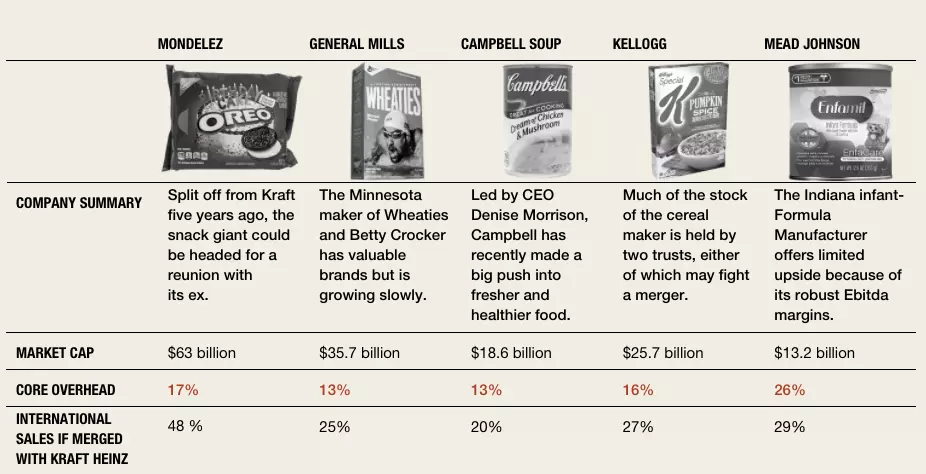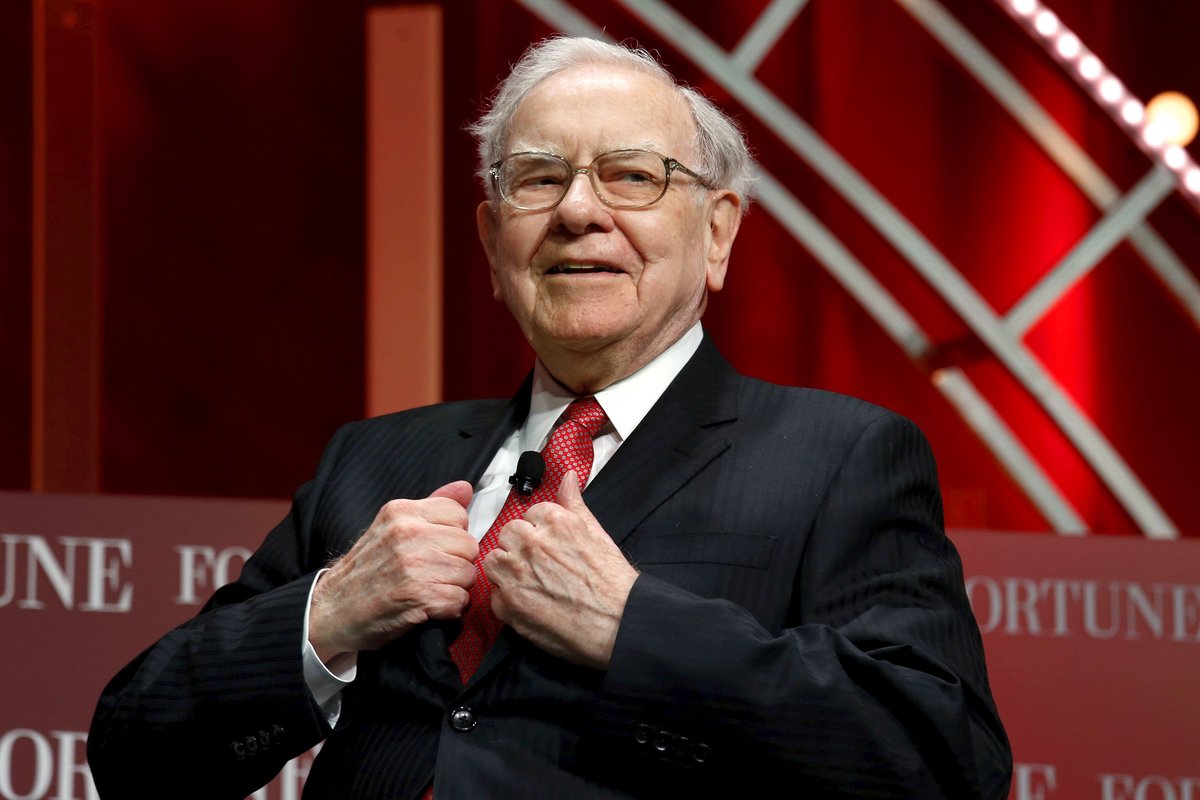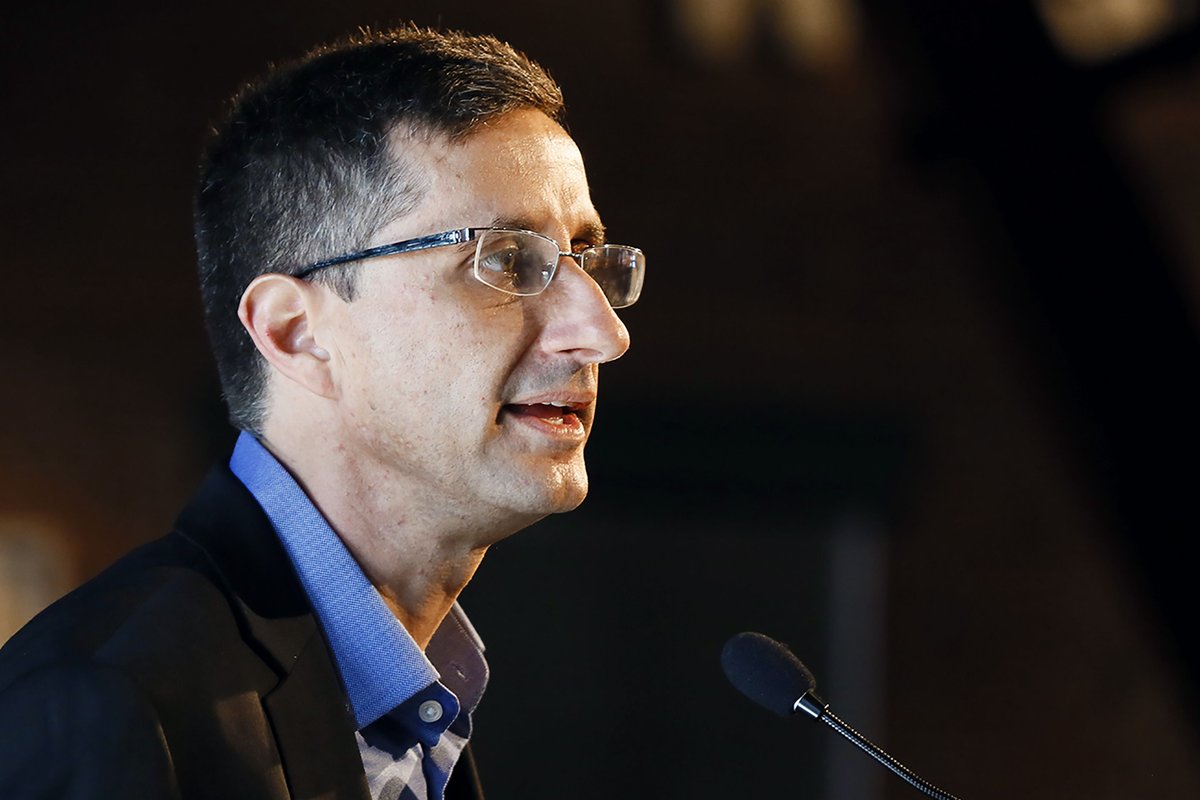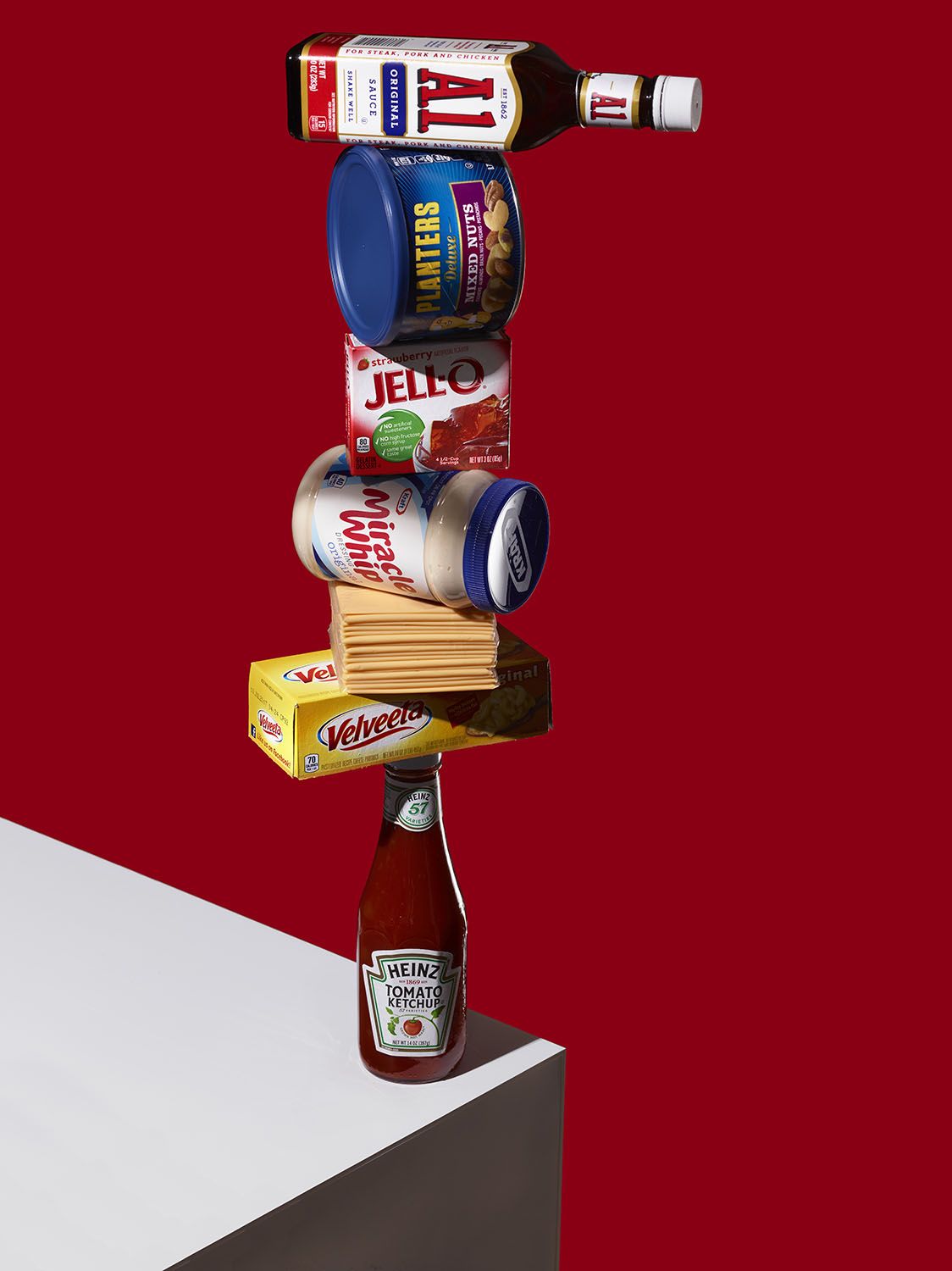How Kraft Heinz Plans To Build A New Global Food Giant
Got that? While Buffett is the largest shareholder by a slight margin and has three seats on the board of directors, including one for himself, he’s happy to let 3G run the show. Back before they bought Kraft, he said, “I’m not embarrassed to admit that Heinz is run far better under [3G] than would be the case if I were in charge.”
The 3G management model that Buffett so admires is worth a close look because it’s on track to eat the food industry. At its heart is meritocracy, broadly defined. Every employee must justify his existence every day. That’s great news for the very best performers; they are promoted with speed that’s unheard-of in lumbering old food companies. Kraft Heinz CEO Bernardo Hees, for example, first became a CEO in 2005 at a company called All America Latina Logistica, owned by a 3G predecessor. He was then made CEO of Burger King, a 3G holding since 2010. He moved up to be CEO of Heinz in 2013 and now of Kraft Heinz. He’s only 46.

Which brings us back to the Oscar Mayer plant in Madison. The truth is, that plant should have been closed long ago, and everybody knew it. “The Madison plant was a terrible plant,” says John Ruff, a retired Kraft executive who spent much of his career in food-processing plants worldwide. “It had good people, but it was an old plant that had been added to over the years. It was never meant to be run as it was being run. Closing it was probably the right thing
Now project that philosophy across a $26 billion company. Step 1 in the 3G management model is a wholesale replacement of the top team and a blitzkrieg of cost cutting. At Heinz, 3G cashiered 11 of the top 12 executives in one day (as this publication chronicled in a 2013 story headlined “Squeezing Heinz”). When Heinz bought Kraft, 10 top executives were quickly dismissed. Of Kraft Heinz’s top 10 leaders today, eight are Brazilians from 3G who know the playbook. “If you don’t speak Portuguese, you’re at a bit of a disadvantage,” says a former Heinz director.
As with every 3G takeover, cost-cutting measures were imposed immediately after the takeover of Kraft. Office refrigerators long stocked with free Kraft products (cheese, Jell-O) were wheeled out within days of the merger’s closing. Corporate aircraft were ditched, and everyone from the CEO down was made to fly coach. And today employees on the road are sometimes required to double up in hotel rooms. More important than the actual savings is the message. “We think and act like owners of our business, treating every dollar as if it were our own,” the company tells prospective employees.
Predictably, 3G does not favor grand corporate digs. It moved Kraft out of its lush suburban Chicago campus into one-quarter the space, occupying five floors of a downtown skyscraper. The floor plan is mostly open—lots of desks, few offices.

PHOTOGRAPHS FROM LEFT: ALAMY STOCK PHOTO; COURTESY OF GENERAL MILLS; ALAMY STOCK PHOTO; COURTESY OF KELLOGG; COURTESY OF MEAD JOHNSON
Lemann and his two partners, Carlos Alberto Sicupira and Marcel Herrmann Telles, bought a Brazilian brewer called Brahma in 1989. Then Brahma bought a big competitor, Antarctica, in 1999, and merged it with the giant Belgian brewer Interbrew in 2004, creating InBev. Its brands included Bass, Beck’s, Labatt, Skol, Stella Artois, and many others. Then, in an act of breathtaking ambition, InBev bought the world’s biggest brewer, Anheuser-Busch, in 2008 for $52 billion. And then, even more remarkably, AB InBev bought the world’s No. 2 brewer, SAB Miller, in the third-largest corporate acquisition in business history, paying over $100 billion. The deal closed last fall and gives AB InBev some 200 brands, including three that are marketed globally: Budweiser, Corona, and Stella Artois. The company brews almost one-third of all the world’s beer.
Note a few key elements of how this was done:
Unlike other PE firms, which have an exit in mind from the day they buy a company, Lemann and partners have stuck with their beer venture for 28 years and counting.
While the mergers with Interbrew and Anheuser-Busch required the partners to dilute their stake, they still dominate the board, with four of the 15 directors.
The pattern is buy, squeeze, repeat. The 3G managers developed extraordinary operating skills and greatly increased the value of every company they bought, but they were not great innovators. They achieved growth through acquisitions—not organically.
And there’s the rub: A central feature of this model is that it can’t work forever. It builds value only by buying more companies. “It’s like the shark that can’t stop swimming,” says a director of another major foodmaker. But AB InBev can’t apply the model further because it’s so big that antitrust authorities would never let it buy another significant brewer. So what’s next? Anyone who might know is not saying. Speculation in the industry is that since AB InBev can expand only outside its industry, its next target will be Coca-Cola.


PHOTOGRAPHS: BUFFETT: KEVIN LAMARQUE—REUTERS; HEES: KEITH SRAKOCIC—AP
Investors are so sure that Kraft Heinz will make a big acquisition that they’ve priced one into the stock. By looking at analysts’ consensus forecast of profits, it’s possible to calculate a stock price that fairly reflects the present value of that future profit stream. When the EVA Dimensions consulting firm ran that analysis for Fortune on the basis of economic profit (after-tax operating profit minus a capital charge), it got a stock price for Kraft Heinz of $59. Actual recent stock price: $87.
The only way Kraft Heinz is worth that much is if it generates far more economic profit than anyone expects the company, as constituted, to generate. That is, investors are already betting on another big 3G-style acquisition. EVA Dimensions CEO Bennett Stewart concludes, “Kraft Heinz needs to add another Kraft Heinz, and at the right price—and the sooner the better.”
For 3G, Mondelez’s attractions are several. Most important, it would help Kraft Heinz achieve one of its top priorities, expanding outside the slow-growing U.S. market. Kraft Heinz does only 30% of its business abroad; adding Mondelez would raise that number to 48% for the combined company. It would increase Kraft Heinz’s business in the fastest-growing food markets, the emerging economies, from 12% to 26% of sales. Mondelez also offers an attractive opportunity for 3G to work its operational magic because its Ebitda (earnings before interest, taxes, depreciation, and amortization) margin is only 18.3%, the lowest of the main potential targets. (The others are Kellogg, Campbell Soup, General Mills, and infant formula maker Mead Johnson.) That leaves a lot of room for Kraft Heinz to raise the margin toward its own towering 30%. One more advantage: Mondelez seems unlikely to resist a deal at the right price. Its board includes activist investor Nelson Peltz and Carlyle Group managing director Patrick Siewert, both ardent value seekers.
Other potential targets all pose problems as well. General Mills, which investors seem to consider the second-best bet for a deal, is slow growing and wouldn’t noticeably increase Kraft Heinz’s international exposure. Mead Johnson’s Ebitda margin is already almost as high as Kraft Heinz’s. Campbell Soup has a dominant shareholder, the Dorrance family, and much of Kellogg’s stock is held by two trusts, any of which might fight a merger, even at a good price.
Another, larger factor could frustrate Kraft Heinz’s search for a much-needed takeover target: The entire food industry is “3G-ing” itself before Kraft Heinz can do it to the companies. Ever since 3G bought Heinz, every major U.S. foodmaker has announced an initiative to reduce its overhead significantly. 3G embraces a demanding discipline called zero-based budgeting, in which every unit’s budget is assumed to be zero at the beginning of each year, and every proposed expense must be justified anew. What do you know? Soon after the Heinz deal, Mondelez adopted zero-based budgeting, trumpeting the expected savings to Wall Street. When Kraft Heinz was closing down plants and laying off workers last summer, General Mills announced it would close five plants and eliminate 1,400 jobs.
Back when 3G was rolling up the beer business, it was taken less seriously—an out-of-nowhere striver. Now everyone in the food business sees it coming and adapts. With fewer excesses left to wring out of target companies, the 3G model might not be as profitable as it used to be.
Kraft Heinz can still find opportunities, mostly because competitors can’t or won’t run the 3G playbook as well as Kraft Heinz does. The unsentimental reasoning with which the company closes plants is applied more broadly. For example, virtually every big company has too many projects underway, and they’re hard to pare back because each one has a constituency. Kraft Heinz trims them anyway under the mantra “fewer, bigger, better,” concentrating resources where they’re most effective; it’s worth the price of disappointing some people.

Combine those policies, relentlessly enforced, and the result is operational superiority. Major competitors are diminishing Kraft Heinz’s lead, but it’s still a big lead.
But Kraft Heinz isn’t going that way. Under the policy of “fewer, bigger, better,” it’s focusing innovation on a few “big bets” that are mostly tweaks of famous, old Big Food products: Jell-O (invented in 1897) reformulated without artificial flavors, dyes, or preservatives; shelf-stable mac and cheese (1937) made with better cheese; Velveeta (1918) cut into smaller blocks. Those products are performing well, but they seem a tepid response to the industry-shaking reality of growth shifting strongly from the center of the supermarket, where those products reside, to the perimeter, where the fresh foods live.
Kraft Heinz today illustrates the essential 3G: quite possibly the world’s best at creating value by eliminating costs and focusing on the most promising opportunities, but not adept at growing the top line organically. In such a model, performance is front-loaded in the years right after an acquisition. Analysts expect Kraft Heinz profits to increase by smaller percentages each year.
That’s why the shark must keep swimming. Even as the food industry changes—and as competitors learn how to make themselves slightly less appetizing prey—Kraft Heinz can probably find enough acquisition targets to keep its model going for years.
But what if Kraft Heinz fully becomes the AB InBev of food and someday finds nothing left to buy? For now, the unsentimental, analytical response is to note that such a risk is a long way off, and discounted to the present, it doesn’t amount to much.
Categories: Finding Oxstones, Investment Wisdom, Stocks, Trends, Patterns, Indicators